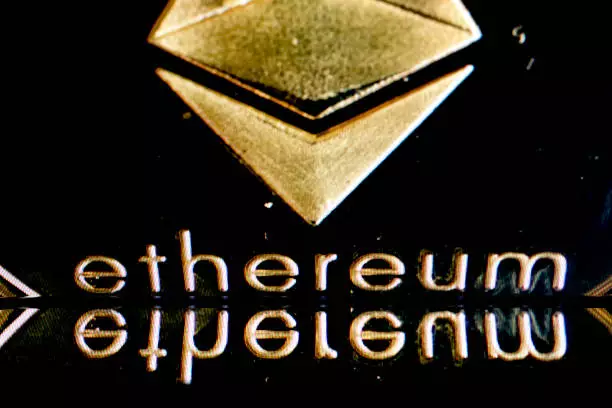Cryptocurrency markets are notorious for their volatility, and the recent price action of Ethereum is a case in point. In the past day alone, Ethereum’s value plummeted towards $2,100 before a quick rebound drew attention back to the crypto giant. Such fluctuations, emblematic of a broader trend within crypto markets—where Bitcoin even dipped below $100,000—should raise eyebrows. Instead of trying to grasp each minor dip and rise, it would serve investors well to adopt a long-term perspective, analyzing the underlying market forces at play rather than being swayed by immediate sentiment.
A critical issue facing today’s investors is the temptation to react impulsively to price changes. Indeed, drastic drops can instill fear and lead to panic selling, thwarting potential profitable outcomes. While some may view Ethereum’s recent volatility as indicative of instability, it could also represent a clearing phase for more substantial growth ahead. Recognizing this dual nature of volatility—both as a challenge and an opportunity—can be key for those with a forward-thinking mindset.
The Analyst Dichotomy: Caution vs. Optimism
Two distinct perspectives currently dominate the conversation surrounding Ethereum’s future. On one hand, analyst @CryptoWaveV employs Elliott Wave Theory, forecasting a possible corrective phase with potential low points around $1,706, which he deems the “ideal buy zone.” This perspective does seem somewhat pessimistic in the short term but emphasizes a long-term bullish outlook post-correction. On the other hand, analyst Merlijn advocates for a more positive view, employing the Wyckoff accumulation method, which suggests that Ethereum is poised for a significant markup phase after completing its spring and test phases.
What is intriguing about these analyses is the underlying message: volatility breeds opportunity for informed investors. For those capable of withstanding market turbulence, positions taken during downturns may yield substantial rewards. This divergence in interpretations begs the question: should one play it safe by waiting for clearer signals, or is now the time to seize the moment and invest?
Understanding Market Psychology
The psychological landscape of cryptocurrency investing cannot be disregarded. Price swings trigger a reflexive response in many investors, oscillating between fear and greed. While emotional reactions are natural, they often lead to deleterious decision-making. In the case of Ethereum, recent price fluctuations can either provoke a knee-jerk panic or instill resolve. Those who recognize this essential psychology can approach investing with a tactical mindset.
The Wyckoff method, as endorsed by Merlijn, suggests that the “shakeout” phase serves a purpose—it’s about clearing out the weak hands in the market. Only then can the efficient accumulation and eventual resurgence occur, which means that the recent dips might have catalyzed the foundation for robust market growth. However, this investment wisdom assumes that potential buyers can withstand the emotional toll of volatility. It’s vital, therefore, to approach the market with both a level head and a robust strategy.
Charting a Path Forward
While current prices hover around $2,420—a modest uptick from its recent lows—the convergence of projections suggests a potential climb towards the staggering $6,000 mark over the next six months to a year. Such projections speak not just to bullish forecasts but also underscore the critical importance of timing and a comprehensive understanding of market structures for investors.
Indeed, both analysts’ predictions reveal a fascinating synergy of ideas. The potential for Ethereum to reach between $6,800 and $7,000 is as thrilling as it is daunting. Such leaps require not just confidence from investors, but a rational analysis that considers whether the potential rewards justify the risks involved. Entering the crypto space demands more than mere participation; it requires thoughtful engagement with evolving market dynamics.
In hindsight, the tumultuous journey of Ethereum, full of peaks and troughs, serves as a reminder that investment often resides at the intersection of analysis and emotional control. The challenge lies not just in interpreting complex data but in mastering oneself amidst chaos—a lesson that resonates far beyond the cryptocurrency markets.


Leave a Reply